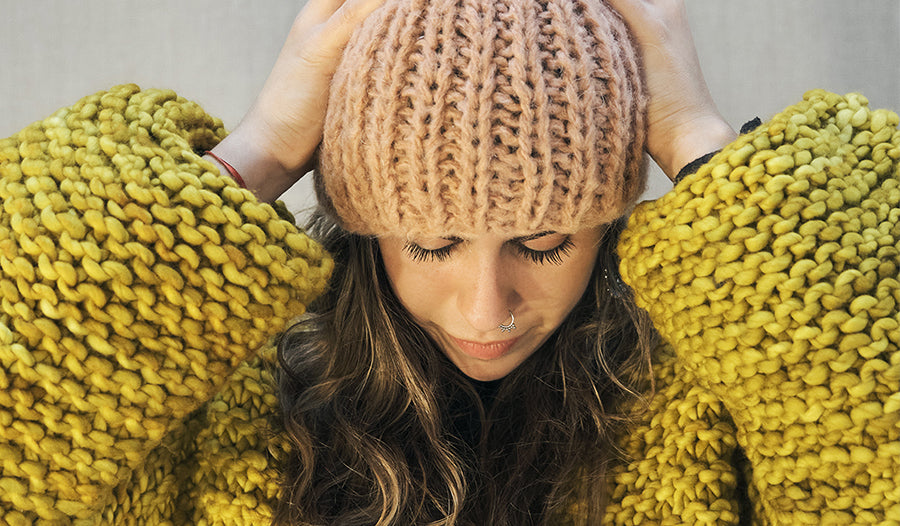
URSA TEXTILES
 Image: URSA Textiles Merino Wool Jacket
Image: URSA Textiles Merino Wool Jacket
If you want an unusually cosy scarf or sweater made of natural fibre, merino wool or alpaca are the usual choices. But what about guanaco, the alpaca’s little-known cousin, which grows an even finer fleece? For many, the guanaco’s time has come to be South America’s finest source for sustainable textiles.
Never heard of a guanaco? You’re not alone. The lama guanicoe is the least famous member of the South American camelid family, which includes the llama, alpaca, and vicuña, a wild, woolly creature yielding superfine fibre that is snapped up by the luxury Italian fashion market for between $400 - $600 a kilo. In arid Patagonian grasslands that have been overgrazed by sheep, letting guanacos move back in can preserve and eventually help restore the shrub-steppe.

The fibre that comes from a guanaco is every bit as fine as that which a vicuña produces–in fact, it’s marginally finer–about 13 microns in thickness versus 15 microns, a minuscule difference. Yet guanacos get no love from the fashion world. One reason is that they are wild animals; they’re bigger and more muscular than their fluffy cousins, and they aren’t easy to catch. Babies start running within a matter of days, and leggy adult guanacos can reach speeds of up to 90 kilometres per hour.
Guanacos are supposedly protected, but the Santa Cruz province of Argentina has proposed allowing the sale of products from hunted guanacos. The Chilean government has quietly allowed guanaco hunting for some time.

Which leads to the other reason you’ve never heard of guanacos: 85% of them live in Argentina, whose tangled economic policies almost seem designed to ensure that you’ll never have an opportunity to buy a guanaco wool sweater. In a sense, the guanaco is a four-legged emblem of what economists call the Argentine Paradox: a perplexing pattern in which this formerly prosperous country with wealth, an educated populace, and abundant resources throws it all away, again and again. ‘Argentina is not a good place to be doing this kind of work,’ says Elizabeth Gleeson, an American who founded the Argentinian brand Ursa Textiles in 2015.
I’m visiting Gleeson’s combination atelier and apartment, on top of an old garment factory that’s been turned into a metal artist’s workshop in the working-class neighborhood of Barracas. Gleeson’s atelier looks like the set of a shabby-chic Anthropologie catalogue shoot, with peeling paint, yellowed artwork, mismatched antique furniture, and earth-toned woven bags and knitwear hanging on the wall.

Gleeson produces knitwear and accessories made by artisan cooperatives in the interior of Argentina and Bolivia, and by impoverished migrant artisans in Buenos Aires. Some of the knitwear is handmade; others are produced on antique manual machines from the 1970s. At one point, she pulls a poncho off her bed–a large, creamy, striped item with a nubby weave, which an artisan had been crafting for the Pope before he canceled his visit. That he has never visited his native country since his papacy is a sore point for Argentinians.
‘In Peru and Bolivia, the government is so supportive of artisan communities,’ Gleeson says. The government of Peru has thrown its weight behind promoting alpaca: flying in international buyers, paying designers to incorporate the material into their collections, and setting up an office in New York City to connect herders and designers. ‘Here it’s the complete opposite.’

Even if Eurocentric porteños were interested in locally made clothes, Gleeson would have to reckon with Argentina’s volatile currency. During my two weeks in Argentina, the value of the peso dropped by fifteen percent. ‘Sometimes I’m like, ugh, I’m running in a hamster wheel,’ she says. ‘I’m having a hard time trying to get things out of the country, but also having a hard time selling them here. I can’t guarantee to anyone that I can get a shipment of handmade knitwear to wherever they are. Registering as an exporter is almost impossible. You have to jump through hoops and spend a ton of money. I’ve had stuff get stuck in customs in Argentina before and I can’t get it out...
Extract from the article Argentina's Textile Crusader: Shifting the Fashion Industry Paradigm, written by Alden Wicker in Issue 104 Keeping Warm.
--
Find out more about Elizabeth Gleeson's work and URSA Textiles on their website, and delve into a world of knits on Instagram: @_ursatextiles_
We're delighted that URSA Textiles has kindly offered one of their Merino Wool Jackets for the Issue 105 Checks & Stripes prize draw. Find out more here:


1 comment
Place to obtain guanaco beanie hat? Thanks!!!